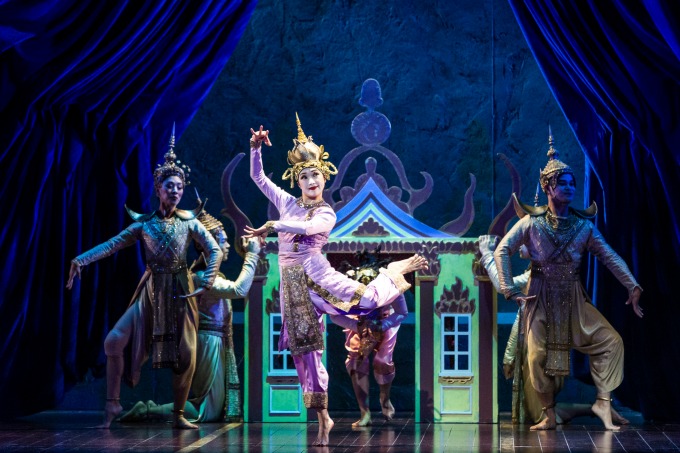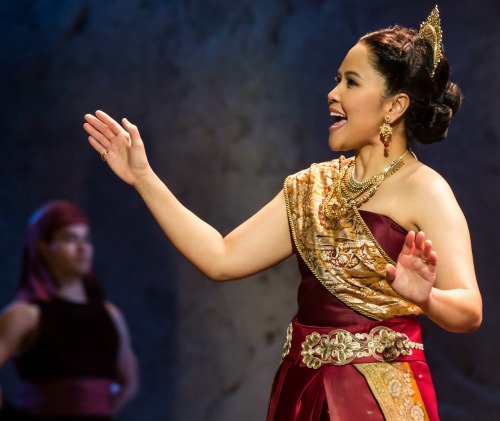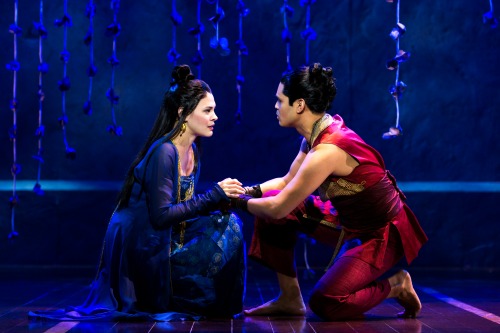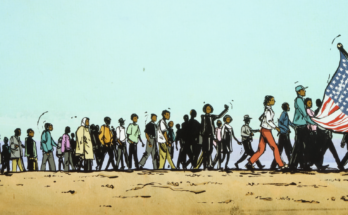
THE REACH OF PIONEERS RODGERS AND HAMMERSTEIN REMAINS UNEQUALED 74 YEARS AFTER THEY OPENED THEIR FIRST BROADWAY MUSICAL.
::
“The King and I” runs Sept. 26-Oct. 1 at the Fox Theatre. Details, tickets HERE.
::
STEPHEN SONDHEIM. Lin-Manuel Miranda. Jonathan Larson. Dear Evan Hansen’s Benji Pasek and Justin Paul.

Without Rodgers and Hammerstein, we likely wouldn’t know those names or their shows — Company, Follies, Sweeney Todd, Hamilton, In the Heights, Rent and many, many others. (Sondheim, by the way, summered in Bucks County, Pa., near Hammerstein’s home. The lyricist acted as the young composer’s mentor and surrogate father.)
Composer Richard Rodgers and lyricist Oscar Hammerstein II were among the 20th-century’s greatest musical theater innovators. They set their own course, breaking from the conventions of the day — allowing future generations to do the same.
In R&H musicals, characters died (Oklahoma!, Carousel); unlikely romances occurred (Carousel, South Pacific, The King and I); and racism was laid bare (South Pacific, The King and I), as were divisions between social classes (Carousel) and generations (Flower Drum Song).
The King and I, says Ted Chapin, president of the New York-based Rodgers & Hammerstein Organization, “is one of the great non-love love stories every written.”

The King and I, the team’s fifth stage musical, was unlike even its own earlier outings (not to mention those of their contemporaries). The connection between Anna and the King is grounded in mutual understanding and respect, not romance. “Shall We Dance,” the only “romantic” song they share, depicts sexual tension not a star-crossed love affair.
For Dick and Oscar, musicals no longer had to be strictly comedic. The terms “musical drama” and “musical play” came into vogue and, for the first time, music and dance moved the plot forward, becoming integral to the story instead of simply serving as diversions between bits of dialogue.

Their shows blended Rodgers’ sophisticated style of musical comedy (perfected in a 25-year partnership with lyricist Lorenz Hart) with Hammerstein’s operetta innovations (conceived in collaboration with composers Sigmund Romberg, Vincent Youmans, Rudolf Friml and Jerome Kern).
The groundbreaking partnership became the most consistently successful one in the American musical theater. Their firsts include:
- Oklahoma! (1943), the first Broadway musical to open without a chorus of girls singing and dancing. Instead, the curtain rose on an old woman churning butter on her porch and a cowboy — offstage and unseen — singing “Oh, What a Beautiful Mornin.” Act 2 included the first death seen onstage (that of hired hand Jud Fry).
- Carousel (1945), one of the first true musical dramas. Its leading man — an unemployed carnival barker who weds prematurely, beats his wife and ultimately kills himself — was unsympathetic. R&H skipped the convention of an overture and flayed open class struggles, juxtaposing the hardscrabble life of Billy the barker and wife Julie against the growing wealth of her best friend, Carrie, and Carrie’s increasingly entrepreneurial, sardine-canning husband.
-

The slave girl Tuptim (Manna Nichols) and her Burmese love Lun Tha (Kavin Panmeechao) kiss in a shadow. South Pacific (1949) took racism head-on in its two core relationships — Navy nurse Nellie Forbush, who can’t abide the mixed-race children of love interest Emile de Becque, and Marine Lt. Joe Cable, who falls deeply in love with the island girl Liat but cannot fathom bringing her home to Philadelphia with him. The song “You’ve Got to Be Carefully Taught” exposes these prejudices with its propulsive melody and frank lyrics.
- The King and I (1951), the first show the team based on a true story and the first suggested to them as a star vehicle (for British music-hall performer Gertrude Lawrence). Lawrence got the idea from Margaret Landon’s 1944 novel, Anna and the King of Siam, itself based on the somewhat fictionalized memoirs of Anna Leonowens.
The Welsh-born Leonowens (1831-1915) taught the children of Siam’s King Mongkut in the 1860s. The musical based on this chapter in her life gave American audiences an early glimpse at life “in the Orient,” as it was then called, not to mention the unconventional cat-and-mouse attraction between the King and Mrs. Anna.

Rodgers and Hammerstein also created such “lesser” musicals as Allegro, Cinderella, The Sound of Music and State Fair. Their shows won 34 Tony awards, 15 Oscars, the Pulitzer Prize for Drama (South Pacific) and two Grammy awards. Six became movies. They are frequently revived on Broadway — continuing to collect Tonys as this Lincoln Center Theatre revival of The King and I did — and staged at colleges and high schools across the country.
This national tour of The King and I, directed by Tony winner Bartlett Sher, won four 2015 Tonys including best revival of a musical. (Sher, you may recall, also directed the stunning Lincoln Center revival of South Pacific that starred Carmen Cusack as Nellie Forbush and played the Fox Theatre in 2010.)
The critical reception for his King and I has been effusive, both in New York and on tour. The Wall Street Journal’s Terry Teachout, one of the most respected theater critics writing today, said simply: “I doubt I’ll see a better production in my lifetime.”
And so it seems that the staying power of Rodgers and Hammerstein and their relevance today is not a puzzlement.



